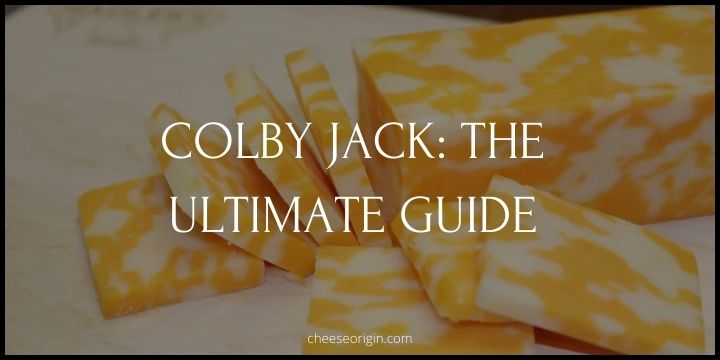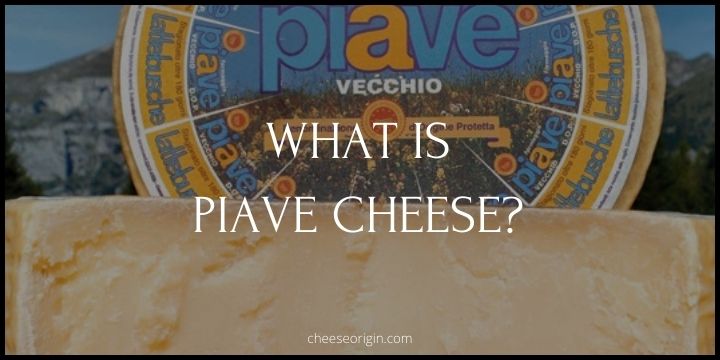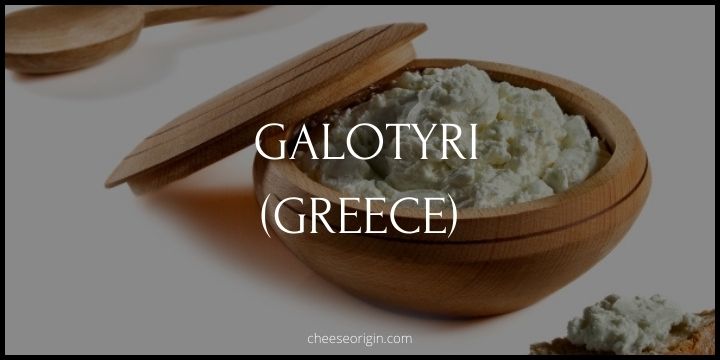What is Kefalotyri? The Salty Delight from Greece and Cyprus
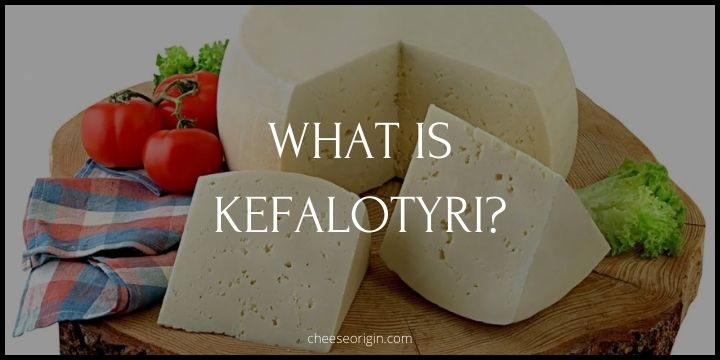
Today, we’re journeying to the sunny landscapes of Greece and Cyprus with a spotlight on Kefalotyri, a traditional hard cheese that’s rich in flavor and steeped in history.
Whether you’re a cheese connoisseur or a curious foodie, join us as we delve into the depths of Kefalotyri, its uses, its substitutes, and the best ways to enjoy this Mediterranean marvel. Prepare for a tasty adventure that promises to be as enriching as it is delicious!
Quick Facts About Kefalotyri
| Quick Facts | Details |
|---|---|
| Origin | Greece and Cyprus |
| Cheese Type | Hard, salty cheese |
| Made From | Sheep or goat’s milk, sometimes a mix |
| Texture | Firm, slightly granular |
| Color | Pale yellow to white |
| Flavor | Salty, tangy, slightly pungent |
| Aging Time | At least 3 months, often up to a year |
| Cooking Uses | Grating, frying, baking, served with fruit |
| Popular Dishes | Saganaki, Moussaka, Pastitsio |
| Nutritional Value | High in protein and calcium, low in lactose |
| Pairings | Red and white wines, olives, bread |
| Shelf Life | Can last for several months when properly stored |
| Availability | Available year-round, but traditionally made in spring and summer |
| Alternative Cheeses | Pecorino Romano, Asiago, Manchego |
| Cultural Significance | A traditional cheese dating back to the Byzantine era |
What is Kefalotyri?

Kefalotyri, an intriguing name that rolls off the tongue, is a culinary treasure hailing from the beautiful lands of Greece and Cyprus. This hard, salty cheese has been delighting palates for centuries, dating back to the Byzantine era. It’s more than just a cheese; it’s a tangible piece of Greek and Cypriot heritage that carries the flavor of tradition in each bite.
Made primarily from sheep or goat’s milk, or often a delightful mix of both, Kefalotyri boasts a firm texture that’s slightly granular, yet pleasingly crumbly. Its color ranges from a pale yellow to white, reflecting the purity of its ingredients and the simplicity of its artisanal production methods.
But what truly sets Kefalotyri apart is its unique flavor profile. Salty, tangy, and slightly pungent, this cheese delivers a taste sensation that’s as unforgettable as it is delicious. The flavor deepens and sharpens with age, making older Kefalotyri cheeses a sought-after delicacy for cheese aficionados.
In the kitchen, Kefalotyri proves to be a versatile companion. It can be grated over pasta, fried for the popular dish Saganaki, or baked into traditional recipes like Moussaka and Pastitsio. Paired with a glass of red or white wine, olives, or fresh bread, Kefalotyri transforms a simple meal into a gourmet experience.
So, the next time you’re exploring the world of cheese, remember Kefalotyri. It’s not just a cheese, but a journey into a rich culinary tradition that has stood the test of time. Whether you’re a seasoned cheese lover or a curious foodie, Kefalotyri promises a taste adventure that you won’t soon forget.
Kefalotyri Tasting Notes
- Color and Texture: Kefalotyri is a pale yellow to white cheese, with a firm, slightly granular texture. It’s solid without being too hard and can be easily sliced or grated.
- Aroma: The cheese has a distinct, slightly pungent aroma. It’s not overpowering, but rather adds depth to the overall sensory experience.
- Flavor: The primary taste of Kefalotyri is its saltiness. This is complemented by tangy undertones and a slightly nutty flavor that becomes more pronounced as the cheese ages.
- Aftertaste: Kefalotyri leaves a lingering taste that is rich and full-bodied. The aftertaste is a reminder of its salty tanginess, which invites you to take another bite.
- Pairings: Kefalotyri pairs well with both red and white wines. It also goes excellently with olives, fruits like figs and grapes, and crusty bread.
- Cooking Notes: When heated, Kefalotyri holds its shape well. It browns beautifully, making it perfect for frying or baking. In dishes like Saganaki, it develops a deliciously golden crust while staying melty and gooey inside.
- Overall Impression: Kefalotyri is a versatile cheese that appeals to a wide range of palates. Its balance of saltiness and tanginess, combined with its pleasing texture and aroma, make it a standout addition to any cheeseboard or cooked dish.
What is Kefalotyri Used for?
Kefalotyri is an extremely versatile cheese that can be used in a variety of culinary applications:
- Grating: Due to its hard texture, Kefalotyri is often grated over dishes like pasta, salads, and soups, adding a salty and tangy flavor.
- Frying: This cheese holds up well to heat and can be fried to create a crispy exterior with a melty interior. It’s commonly used in the Greek dish Saganaki, a fried cheese appetizer.
- Baking: Kefalotyri is also used in baked dishes such as Moussaka and Pastitsio. It adds depth and richness to these traditional Greek and Cypriot recipes.
- Cheese Boards: With its distinct flavor and firm texture, Kefalotyri is a great addition to cheese boards. It pairs well with fruits, olives, and a variety of wines.
- Snacking: Kefalotyri can be enjoyed on its own or with a slice of bread. It’s a popular snack in Greece and Cyprus, often served with a glass of wine.
- Culinary Garnish: In some cases, Kefalotyri is used as a garnish, adding a final touch of flavor to dishes just before they’re served.
- Melting: Despite its hard texture, Kefalotyri melts well, making it suitable for sandwiches, pizzas, and sauces.
Is Kefalotyri the Same as Halloumi?
No, Kefalotyri and Halloumi are not the same; they are distinct types of cheese originating from different regions of Greece and Cyprus. While both are part of the rich culinary tradition of these areas, they have unique characteristics that set them apart.
| Kefalotyri | Halloumi | |
|---|---|---|
| High melting point, retains its shape when cooked, and becomes soft and chewy. | Originates from Greece. | Originates from Cyprus. |
| Type of Cheese | A hard, salty cheese. | A semi-hard, unripened, brined cheese. |
| Milk Used | Made from sheep’s milk, goat’s milk, or a blend of both. | Traditionally made from a mixture of goat’s and sheep’s milk, and sometimes cow’s milk. |
| Texture | Firm, slightly granular texture. | Unripened, consumed fresh, or stored in its own brine. |
| Flavor | Tangy flavor that intensifies with aging. | Less salty than Kefalotyri, has a unique layered texture. |
| Cooking Uses | Can be grated, sliced, or fried. Commonly used in dishes like moussaka and pastitsio. | Ideal for grilling or frying due to its high melting point. When cooked, it develops a crust and retains its shape. |
| Aging | Often aged, which intensifies its flavor. | Unripened, consumed fresh or stored in its own brine. |
Kefalotyri

Kefalotyri is a hard, salty cheese that can be made from sheep’s milk, goat’s milk, or a blend of both. It has a tangy flavor and a firm, slightly granular texture. This cheese is often aged, which intensifies its flavor. Kefalotyri can be grated, sliced, or fried, and it is commonly used in dishes like moussaka and pastitsio.
Halloumi
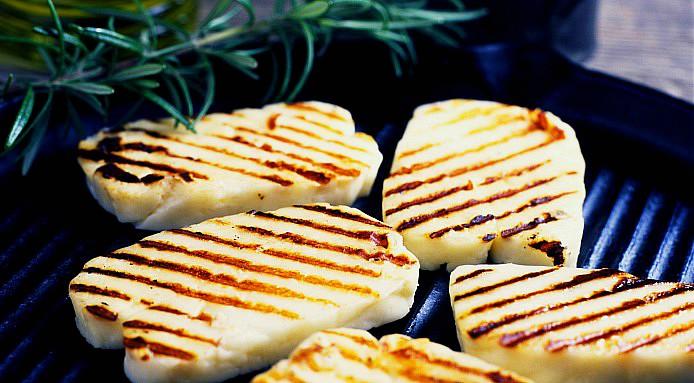
On the other hand, Halloumi is a semi-hard, unripened, brined cheese traditionally made from a mixture of goat’s and sheep’s milk, and sometimes cow’s milk. Halloumi is less salty than Kefalotyri and has a high melting point, making it ideal for grilling or frying. When cooked, it develops a beautiful crust and retains its shape, becoming soft and chewy without melting away.
>> Click here to read our in-depth guide on Halloumi
While both Kefalotyri and Halloumi are cherished components of Greek and Cypriot cuisine, they offer different taste experiences and culinary uses.
10 Best Kefalotyri Substitutes
| Substitute | Description |
|---|---|
| Pecorino Romano | A hard, salty Italian cheese made from sheep’s milk. It has a similar tangy flavor to Kefalotyri. |
| Parmesan | Another hard, aged cheese that can be used as a substitute. It’s less tangy but has a similar texture. |
| Asiago | An Italian cheese with a flavor that can range from smooth and creamy to crumbly and sharp, depending on its aging. |
| Manchego | A Spanish cheese made from sheep’s milk. It has a distinctive flavor that can work well in many dishes. |
| Romano | Made from cow’s milk, it’s sharper and saltier than Parmesan but can work as a substitute. |
| Feta | A Greek cheese that’s softer and more crumbly. It can work as a substitute in some recipes, especially salads. |
| Gruyère | A Swiss cheese that melts well, making it a good option for baked or grilled dishes. |
| Provolone | An Italian cheese that’s semi-hard and has a mild flavor. It can work as a substitute, especially when melted. |
| Mizithra | A Greek cheese that’s often used in the same way as Kefalotyri. It’s made from sheep’s and sometimes goat’s milk. |
| Halloumi | A Cypriot cheese that’s semi-hard and less salty. It holds its shape when cooked, making it a good option for frying or grilling. |
What Pairs Well With Kefalotyri?
Food that goes well with Kefalotyri:
| Category | Foods |
|---|---|
| Breads | Pita bread, crusty bread, baguette, sourdough |
| Meats | Grilled lamb, chicken souvlaki, pork gyros |
| Vegetables | Grilled vegetables, Greek salad (tomatoes, cucumbers, olives), roasted red peppers |
| Fruits | Figs, grapes, apples, pears |
| Nuts & Seeds | Almonds, walnuts, sesame seeds |
| Seafood | Shrimp, calamari, grilled fish |
| Grains | Couscous, quinoa, bulgur wheat |
| Herbs & Spices | Oregano, thyme, rosemary, garlic |
| Condiments | Olive oil, balsamic vinegar, tzatziki sauce |
| Desserts | Baklava, Greek yogurt with honey, Galaktoboureko (Greek custard pie) |
Also read: 11 Best Crackers that Pair Well with Cheese
Beverage that goes well with Kefalotyri:
| Category | Beverages |
|---|---|
| Wine | Greek white wines (like Assyrtiko), dry rosé, light-bodied red wines (like Agiorgitiko) |
| Beer | Pilsners, wheat beers, amber ales |
| Spirits | Ouzo, Metaxa (Greek brandy), Tsipouro (Greek distilled spirit) |
| Non-Alcoholic | Sparkling water, iced tea with lemon, fresh fruit juices like apple or grape |
Also read: Best Wine and Cheese Pairings: The Ultimate Guide
Also read:
- What is Rogue River Blue? America’s Award-Winning Cheese
- What is Saganaki? The Greek Culinary Star
- What is Cheddar Jack? The Art of Cheese Blending
- What is String Cheese? Everything You Need to Know
- What is Chihuahua Cheese? Mexican Cuisine’s Best Kept Secret
- What is Buche de Chevre? A French Culinary Treasure
- What is Fromage Frais? A French Culinary Gem Explained


